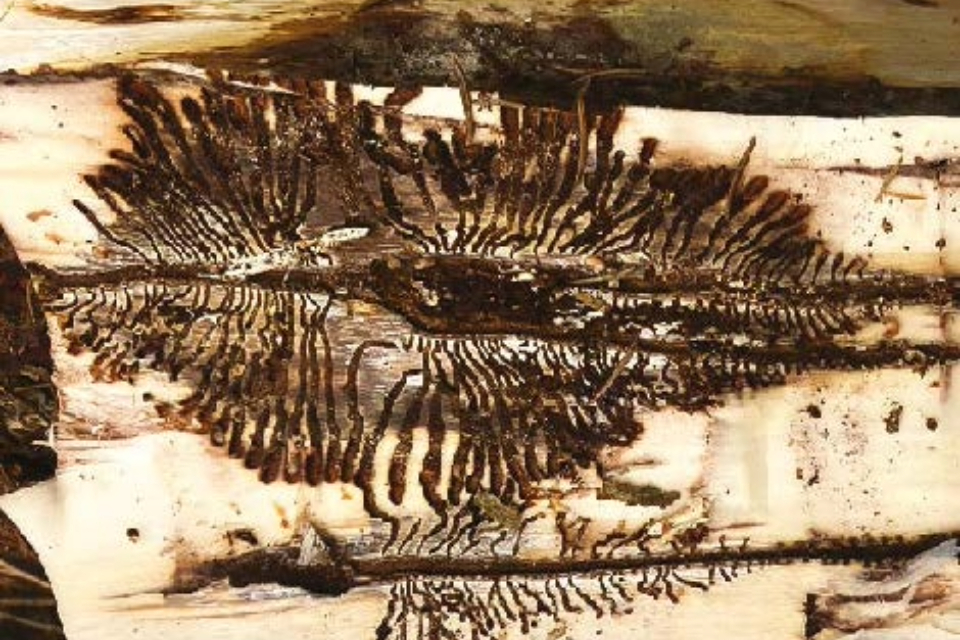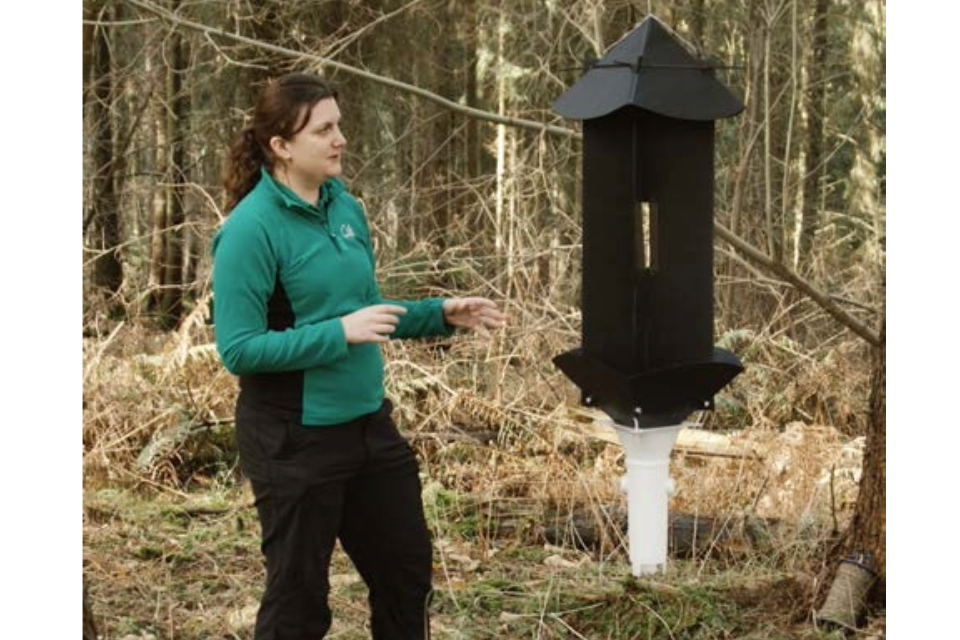Statutory Plant Health Notice (SPHN) process for Ips typographus infestations
Published 5 June 2025
Applies to England
If you receive a Statutory Plant Health Notice (SPHN), it means a notifiable tree pest or disease has been found on the land you own or manage.
The Ips typographus beetle poses a major threat to spruce trees. When infestations are confirmed, landowners will be served an SPHN requiring urgent forestry operations.
Many landowners are unaware of what this involves, the timeline for responding and the support available. This content aims to explain the process, reduce confusion and support compliance.

A close up of the eight-toothed spruce bark beetle (Ips typographus). A small brown beetle approximately 4 to 5mm long. Crown copyright.
The SPHN process
- Plant Health surveillance identifies spruce at risk of infestation.
2. Plant Health Officer inspection finds suspicious evidence of infestation (beetles, galleries) and sends sample to Forest Research for identification.
If Ips typographus is confirmed:
3. SPHNs are served to spruce owners. SPHNs are served on spruce within 1km of confirmed outbreaks.
4. A Forestry Commission Woodland Officer will contact you.
What you need to do
Coordinate with a Woodland Officer for advice on available grants
5. Submit an application for funding (typically processed in 2 to 6 weeks).
6. Landowner or agent arranges for SPHN operations to be carried out.
7. Agent/contractor provides method statement for approval by Plant Health Forestry.
8. A grant agreement is offered and accepted, or no grant is needed to support felling.

A close up of bark damaged by the Ips typographus beetle. It shows the intricate galleries carved by the larvae. The galleries radiate outwards in a fan shape. Crown copyright.
When SPHN operations commence
Destroy infested, or suspected to be infested material, within 6 weeks. Follow SPHN timeframes for removing stressed and healthy trees, which will vary depending on the site and level of infestation. Adhere to applicable legislation, regulations and best practice in line with UK Forestry Standard.
9. Possible infrastructure work may be needed. For example, widening access from main road, create stacking area or upgrade track.
10. Harvesting: felling, extraction and chipping of high risk material.
11. Material identified as low-risk can be moved as roundwood to an authorised processor.
Material identified as high-risk on your SPHN must be chipped on site prior to movement.
12. Harvesting residue greater than 8cm in diameter must be destroyed by mulching, chipping or raking and burning.
13. Reinstatement of rides and rutted areas.
SPHN compliance inspection by Plant Health Forestry followed by approval
14. Installation of stake-mounted eradication traps in the spring following the operations. This will be for 3 years, with fortnightly access required during the spring and summer months.
15. Replanting of felled area (winter following SPHN felling) with installation of any necessary protection (e.g. tree shelters, fencing)

A Woodland Officer attends to an Ips typographus trap. Crown copyright.
Maintenance of planted trees
Speak to your local Woodland Officer for tailored support.
Read how to Maintain new trees after restocking.
Further resources
Find out more about Ips typographus.
How to Apply for Ips typographus authorisation to receive and process spruce trees.

